
Petroglyphs were discovered by local residents in Usagalimal, India in 1993 after monsoon flooding. The site was then excavated. The more than one hundred rocks carvings became open to the public in 2001. The Archeological Survey of India put up signage and started promoting the site, although judging from the entries in the guest book, few tourists visit. The Forest Department of India has declared the site which is located not far from an old iron-ore mine (shown below) as a protected area.
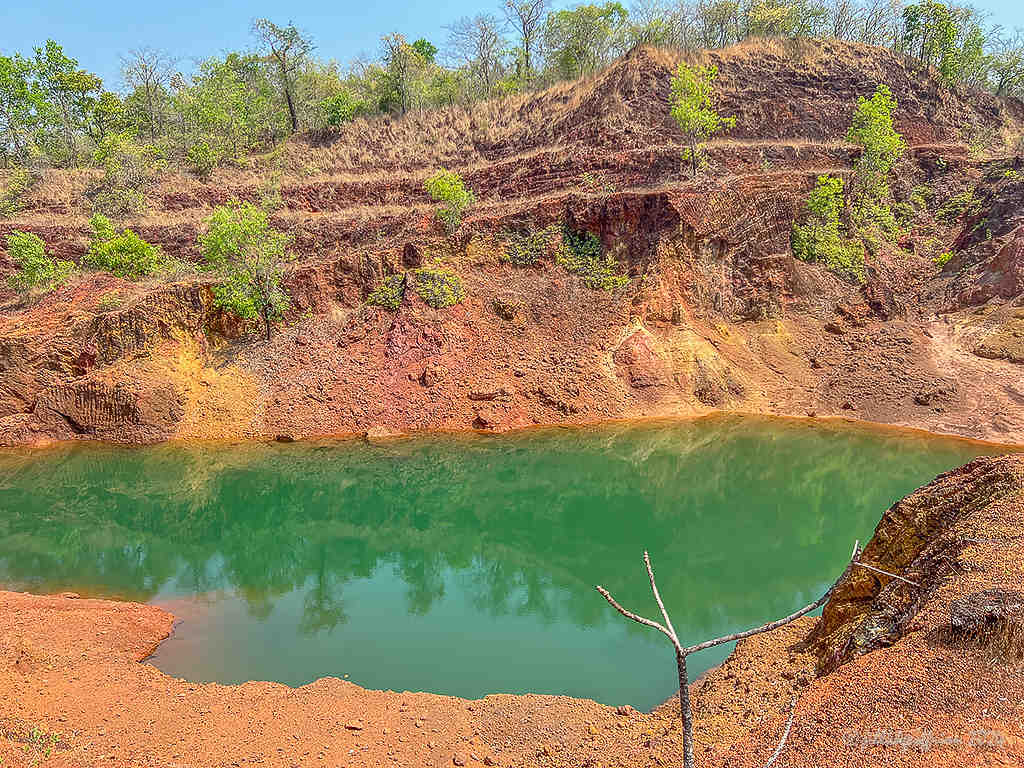
Is there a labyrinth you dream of visiting or walking? Ever since I learned that the labyrinth near Goa, India may be one of the oldest in the world (that we know about), I hoped to see it one day. Labyrinth historian Jeff Saward gave me further motivation to visit when he wrote that specific dating was difficult, but “…it could well be the oldest surviving walkable labyrinth in the world – well just about walkable!” When visiting Goa in western India, my husband and I hired a guide and a driver to make the hour and forty-five minute trip out to the site. This was a good idea because even with signs, it turned out to be hard to locate. We needed to stop and ask for directions and help multiple times!
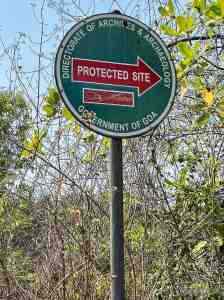
Once we sensed we were near, we parked, and walked to the official welcome “office”, a thatched hut made of local materials. We were greeted by friendly government workers who were responsible for this archaeological site.

This labyrinth is located at one of the most important prehistoric sites in Western India, and is said to be linked to the early traces of human settlement in the area. It is found on a huge slab of laterite stone beside the Kushawati River at Pansimol.

The labyrinth has a seven-circuit/eight wall pattern. It is 9.35 feet (285 centimeters) by 8.66 feet (264 centimeters). It was carved to a depth of roughly .8 inches (2 centimeters) to 1.6 inches (4 centimeters) It opens to the south. The entrance to the labyrinth and to the center face the river.
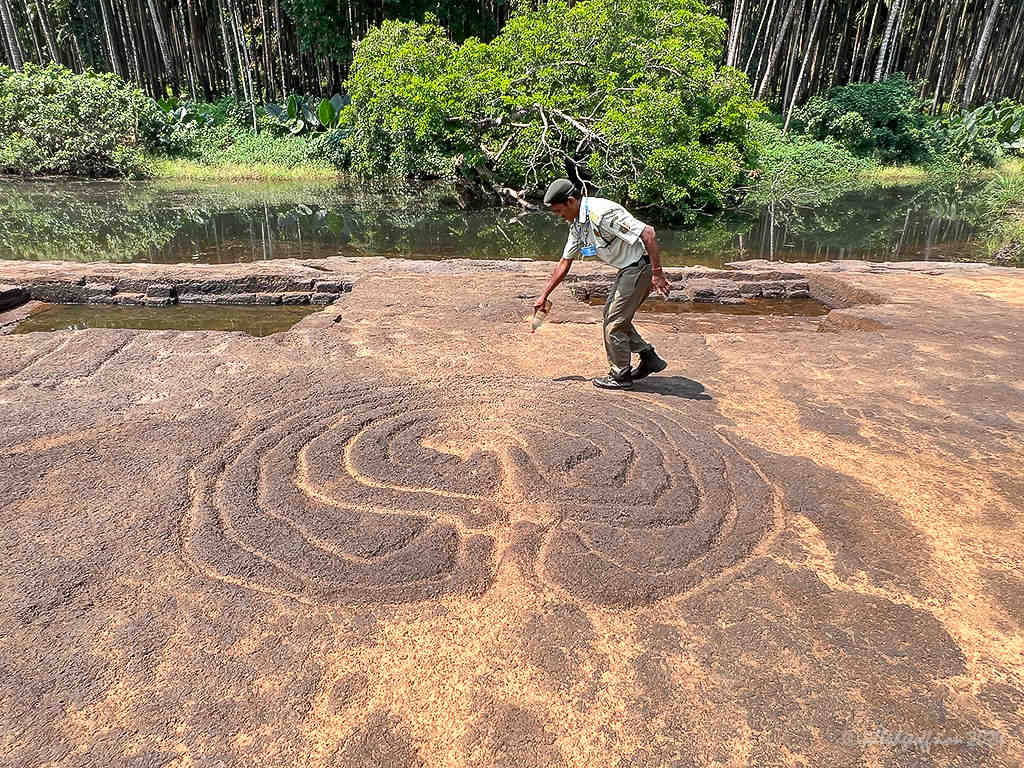
The local guides were not sure what to make of the labyrinth, but they helped us to see its walls by pouring water on them. It was extremely helpful. While there are a few areas of the labyrinth that seem worn away, the “classical” labyrinth pattern is discernible.
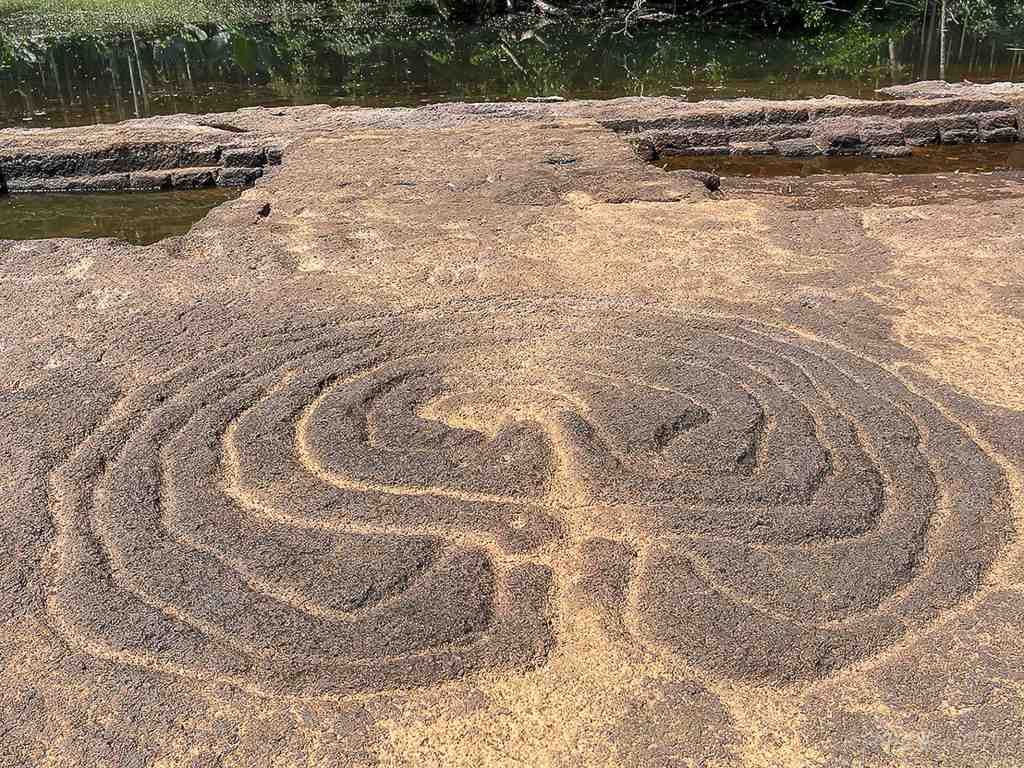
On a site brochure that was given to me by the government guide, the labyrinth is described as, “having seven concentric circles with a passage like feature that leads to the centre. Its massive size and geometric features have led researchers to interpret it variously. While some identify it with Chakravyūha [a military formation used to surround enemies, depicted in the Hindu epic Mahabharata], some connect it with astronomy…its symbolism is still open to interpretation.”
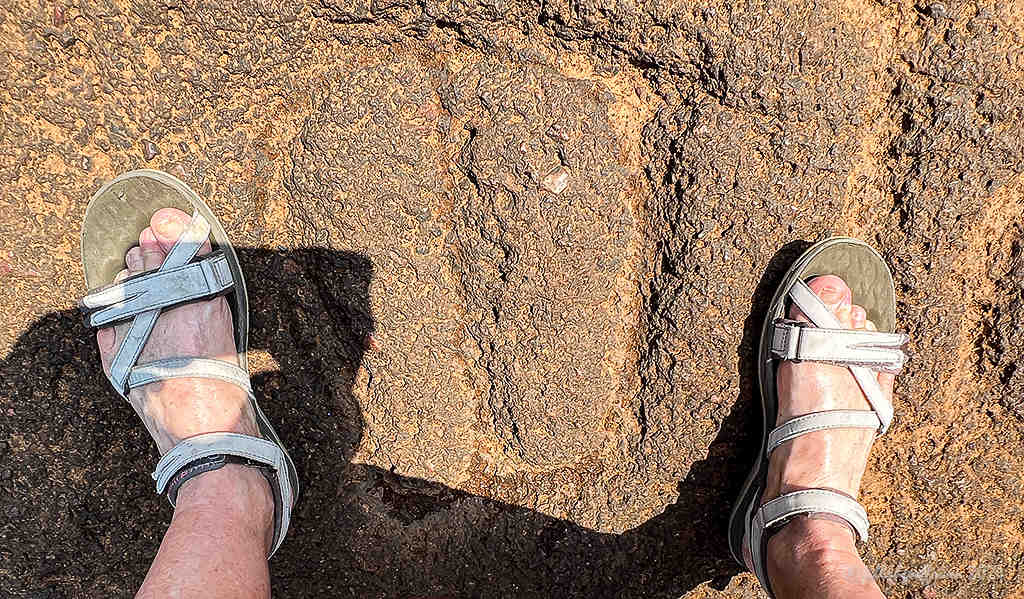
Standing amidst many petroglyphs—feet being some of the most common (perhaps representing those who had died?)— and considering the long history of this labyrinth, many questions came to mind.

Was this labyrinth created during the prehistoric period? Who incised this petroglyph—the largest on the slab by the riverside—and why? Had it been used ceremonially and/or for some other purpose(s)? For its creators, did it represent life or death—or both? Was it primarily for viewing or walking? Of course, we can’t know the answers, but the sense of being connected to a rich history was unavoidable.

The labyrinth is often covered by annual monsoon rains (and mud). Local admirers of the petroglyphs, including the labyrinth, have requested the government to construct a concrete parapet along the bank so that they won’t be submerged each year. So far, this has not taken place.
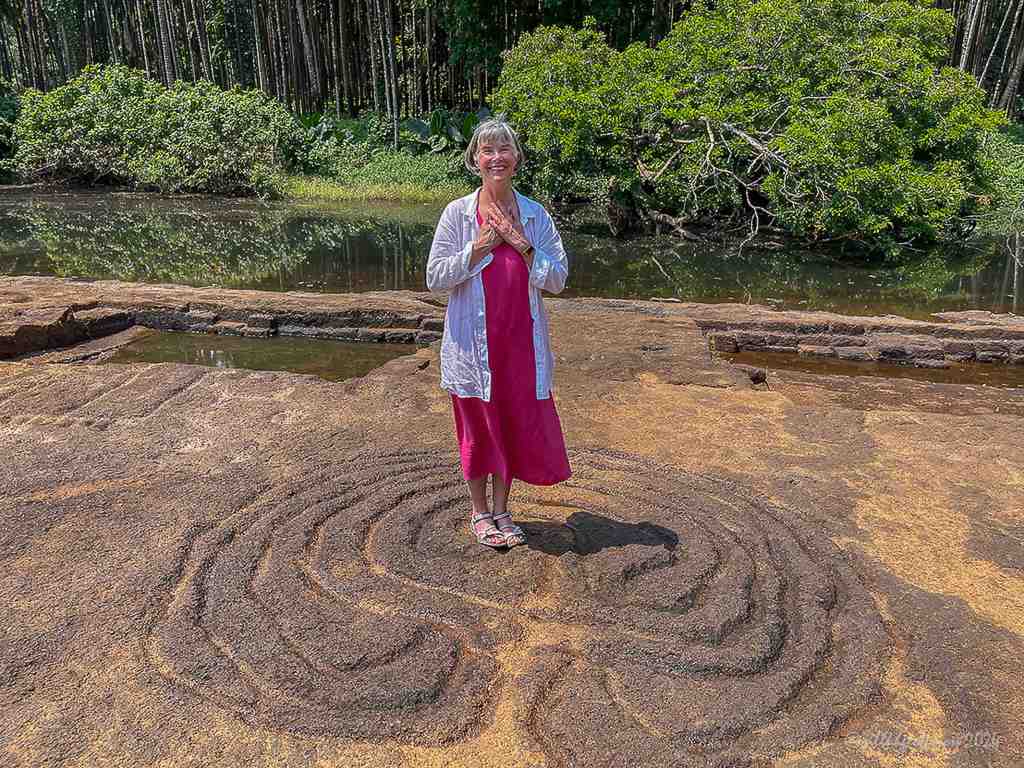
I felt grateful to have placed my hand on this ancient labyrinth as I assumed many others throughout the ages had done, to study its shape and positioning among the other symbols on the laterite slab, to wonder about its origins in situ, and to walk it. Hopefully one day archaeologists will find a way to date it accurately. Being one of the oldest labyrinths on our planet, it certainly deserves further study and better protection.
If You Go
These instructions from “Stuck in the Labyrinth” in The Times of India (2014) might be of some help: The site is some 70km southeast of Panaji. From Margao head towards Quepem and take the road to Tilamol. A right turn at the Tilamol junction will lead one through the villages of Rivona and Colomb. Past Colomb, you will be greeted with a small circular sign announcing ‘protected site’. Follow the route that passes thorough a non-asphalted road until you come across an agricultural farm that overlooks the open-air rock art gallery.
Here’s another set of directions from the Times of India (2010): The engravings are situated on the bed of the river Kushavati, beyond old iron ore mines, outside Usagalimal village, accessible via a winding pathway. It is about one km down from the main road between Rivona to Neturlim, and about 16 km south of Rivona in the Sanguem taluka in South Goa district.
Your Next Step
To locate this labyrinth or a labyrinth near you use the World-wide Labyrinth Locator.
If you would prefer to walk a labyrinth with your eyes, a finger, or a pen, you can download, print, and pray with this Chartres-style labyrinth.
Would you like to walk the labyrinth with me in Chartres in June, 2024?
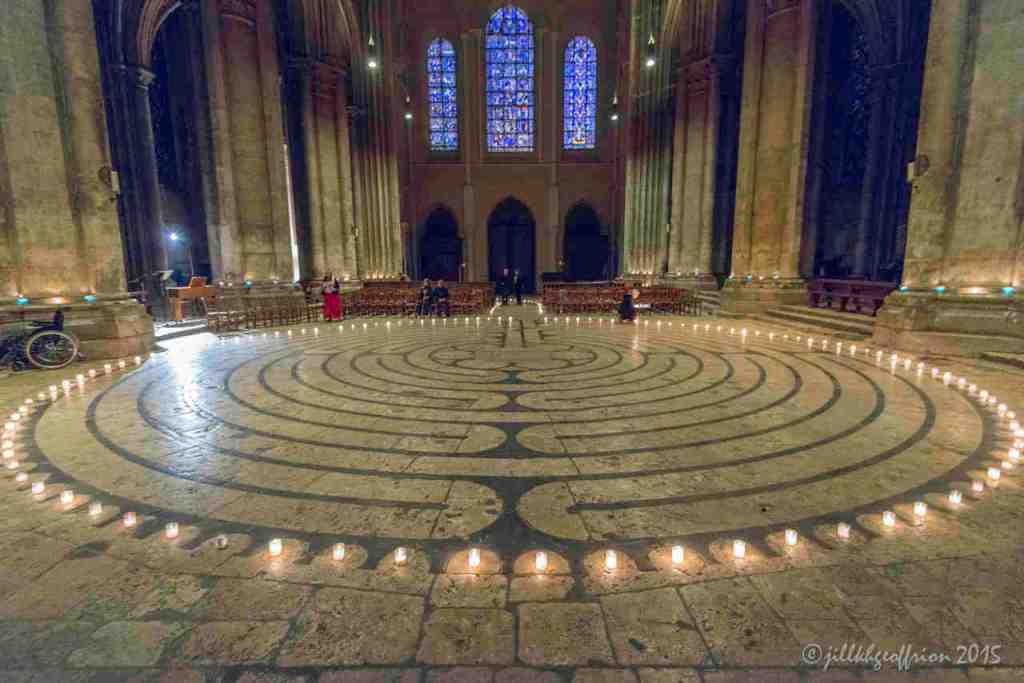
I will be leading a week-long pilgrimage in Chartres, France hosted by Lauren Artress and Veriditas from June 10-14, 2024. Our theme will be The Treasures of the Chartres Cathedral and its Labyrinth. An after-hours labyrinth walk with just our group is one of the highlights.



Jill, I’m thrilled you were able to experience this ancient Labyrinth for yourself. What an amazing opportunity for you and Tim. Thank you for sharing your visit with us.
Tim
Great account of the Indian labyrinth. Hope your post leads to further interpretations and perhaps revised local information. Amazing that you are walking the Chartres labyrinth again. Felicitations!! Bonne chance!
Penny & Michael from the James tour